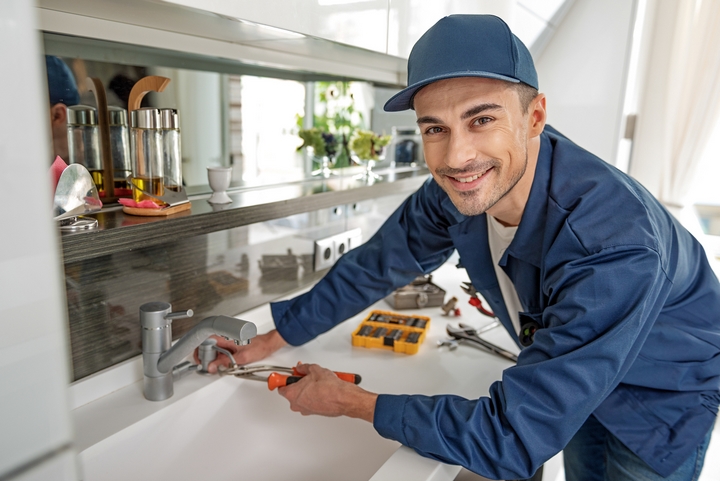On this page down the page you can discover a good deal of excellent advice when it comes to The Future of Plumbing: Trends and Innovations to Watch.

Introduction
The pipes market is going through a transformative stage driven by technical advancements and growing worries for sustainability and performance. This short article checks out emerging trends and innovations shaping the future of pipes.
Smart Plumbing Equipments
Incorporating smart modern technology into pipes systems allows remote monitoring, leak discovery, and automated maintenance. Smart sensing units and IoT (Internet of Points) gadgets allow property owners and plumbings to keep an eye on water use and spot concerns in real-time, causing much more reliable source management and positive maintenance.
Water Performance Solutions
With increasing focus on water conservation, innovative solutions are being established to lessen water wastage in plumbing systems. High-efficiency fixtures, greywater recycling systems, and clever watering controllers are among the modern technologies assisting consumers decrease their water footprint while maintaining comfort and benefit.
Lasting Materials
The change towards sustainability includes plumbing materials, with an expanding choice for environmentally friendly options. Naturally degradable piping products, such as PEX (cross-linked polyethylene) and HDPE (high-density polyethylene), deal sturdiness and resistance to corrosion without endangering environmental stability.
Anticipating Maintenance
Anticipating maintenance strategies leverage information analytics and artificial intelligence formulas to expect and prevent pipes problems prior to they occur. By examining historical data and efficiency metrics, predictive maintenance algorithms can determine patterns and anomalies, allowing positive treatments to avoid costly repairs and interruptions.
Augmented Fact in Pipes
Enhanced Fact (AR) technology is transforming pipes by supplying service technicians with real-time visual advice for troubleshooting and repair work jobs. AR-enabled smart glasses or mobile applications overlay electronic details onto the physical environment, helping plumbers visualize pipe layouts, recognize hidden leakages, and implement repairs with precision.
Impact of 3D Printing
The development of 3D printing has introduced new opportunities in producing plumbing parts. From custom-made components to elaborate pipeline installations, 3D printing enables quick prototyping and on-demand manufacturing, minimizing preparations and allowing higher customization in pipes layout.
Health and Safety Characteristics
In reaction to increased concerns for health and safety, pipes fixtures are incorporating attributes such as antimicrobial surfaces, touchless procedure, and self-cleaning devices. These developments not only enhance health yet also advertise individual comfort and benefit.
Hygiene-focused Components
Touchless taps, self-sanitizing toilets, and antimicrobial surface areas are ending up being increasingly widespread in household and industrial setups, lessening the risk of germ transmission and advertising a cleaner, healthier atmosphere.
Water Quality Tracking
Advancements in water high quality surveillance technologies allow property owners to check the pureness and safety and security of their water system in real-time. Smart water quality sensors can find contaminants, pH degrees, and temperature level variants, empowering individuals to take aggressive measures to make sure water security.
Remote Plumbing Solutions
Remote diagnostics and virtual aid are changing the method pipes services are supplied. Through video clip conferencing and remote gain access to innovations, plumbing professionals can fix problems, give assistance for DIY fixings, and also execute remote evaluations, supplying higher accessibility and benefit to property owners.
Difficulties and Opportunities
While plumbing technologies hold tremendous assurance, they also present difficulties such as data privacy worries, regulatory compliance, and the need for labor force training. Attending to these difficulties requires partnership in between market stakeholders and regulative bodies to make sure safe and accountable implementation of brand-new technologies.
Governing Landscape
Regulatory frameworks play a vital role fit the adoption of plumbing developments, with criteria and codes controling every little thing from water effectiveness to product safety. As innovations continue to develop, regulatory bodies need to adjust to ensure consumer defense and ecological stewardship.
Future Expectation
The future of pipes is characterized by continued innovation and assimilation with various other sectors such as IoT, renewable resource, and building automation. By welcoming sustainable methods, leveraging arising technologies, and focusing on user-centric design, the plumbing market is positioned to address the advancing needs of society while decreasing its ecological impact.
Conclusion
In conclusion, the future of plumbing is defined by a merging of modern technology, sustainability, and user-centric design. By embracing smart services, sustainable materials, and positive maintenance practices, the pipes industry can boost performance, advertise safety and security, and add to a more lasting future.
Plumbing Technology Trends 2024: Shaping a Sustainable and Efficient Future
Plumbing Technology: A Beacon of Innovation
Intelligent Plumbing Systems: The adoption of smart plumbing solutions offers unparalleled control over water usage, preventing waste and ensuring optimal efficiency. These systems can be installed by qualified contractors and may require technicians with expertise in new codes for proper functionality. Eco-Friendly Piping: Innovations in piping materials, like PEX and recycled content options, are making plumbing systems more sustainable. These materials are not only better for the environment but also durable and flexible, making them easier to install and less likely to need repairs. Automated Leak Detection: New plumbing technologies include systems that can automatically detect leaks. This is a big deal because it means we can fix them before they cause a lot of damage or waste too much water. It’s all about catching problems early and saving resources. Energy-Efficient Water Heaters: There’s also a big push towards devices that use less energy. This includes solar and tankless models, which provide hot water only when it’s needed, cutting down on energy use and costs. Plumbers: Champions of Sustainability
Adopting Green Practices: Contractors who specialize in sustainable plumbing can ensure your system meets the latest regulations and utilizes efficient valves. They undergo comprehensive training programs that emphasize sustainability in practices like eco-friendly installations. Water Conservation Efforts: Through the installation of high-efficiency appliances, plumbers are essential in reducing water consumption and promoting conservation. When repairing or replacing older fixtures, plumbers can recommend high-efficiency options that comply with local codes. Pipe: The Lifeline of Modern Plumbing
Innovative Pipe Solutions: The use of environmentally friendly and durable materials in pipes, like PEX and recycled content options, reduces the ecological footprint and enhances water quality. These innovative pipe solutions may require specialized repair techniques from qualified plumbers familiar with the materials. Advanced Leak Detection: Modern pipes are now more frequently equipped with sensor technology that can identify leaks early, conserving water and preventing damage. Early leak detection can save homeowners money on repair costs and potential water damage. Water Heater: At the Forefront of Efficiency
Renewable Energy Heaters: Solar heaters and other renewable energy-powered models are becoming more common, offering an eco-friendly alternative to traditional methods. These benefit the environment but can also potentially lead to lower water bills through reduced energy use. On-Demand Heating: Tankless heaters have gained popularity for their ability to provide hot water as needed, minimizing energy waste. This innovative technology eliminates the need for a large storage tank, freeing up valuable space and simplifying the installation process for qualified plumbers. https://intownplumbingtx.com/articles/plumbing-technology-trends/

I'm certainly very fascinated with 7 Plumbing Industry Trends You Need To Know and I hope you liked our blog post. If you enjoyed reading our blog posting if you please consider to share it. Kudos for being here. Return soon.
Book